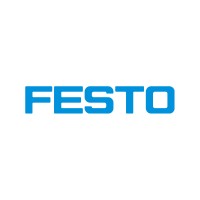
Festo USA
Festo is a leading global manufacturer of pneumatic and electromechanical systems, components and controls for process control and factory automation solutions, with more than 55 national headquarters serving over 180 countries. Celebrating over 40 years of innovation in the United States and over 80 years globally, Festo has continuously elevated the state of manufacturing with innovations and optimized motion control solutions that deliver higher performing, more profitable automated manufacturing and processing equipment. Festo continues to use our experiences and knowledge to carry over into other leading industries such as medical and lab automation resulting in an effort to improve the quality of life for all. Our dedication to the advancement of automation extends beyond technology to the education of current and future automation and robotic designers with simulation tools, teaching programs, and on-site services.






